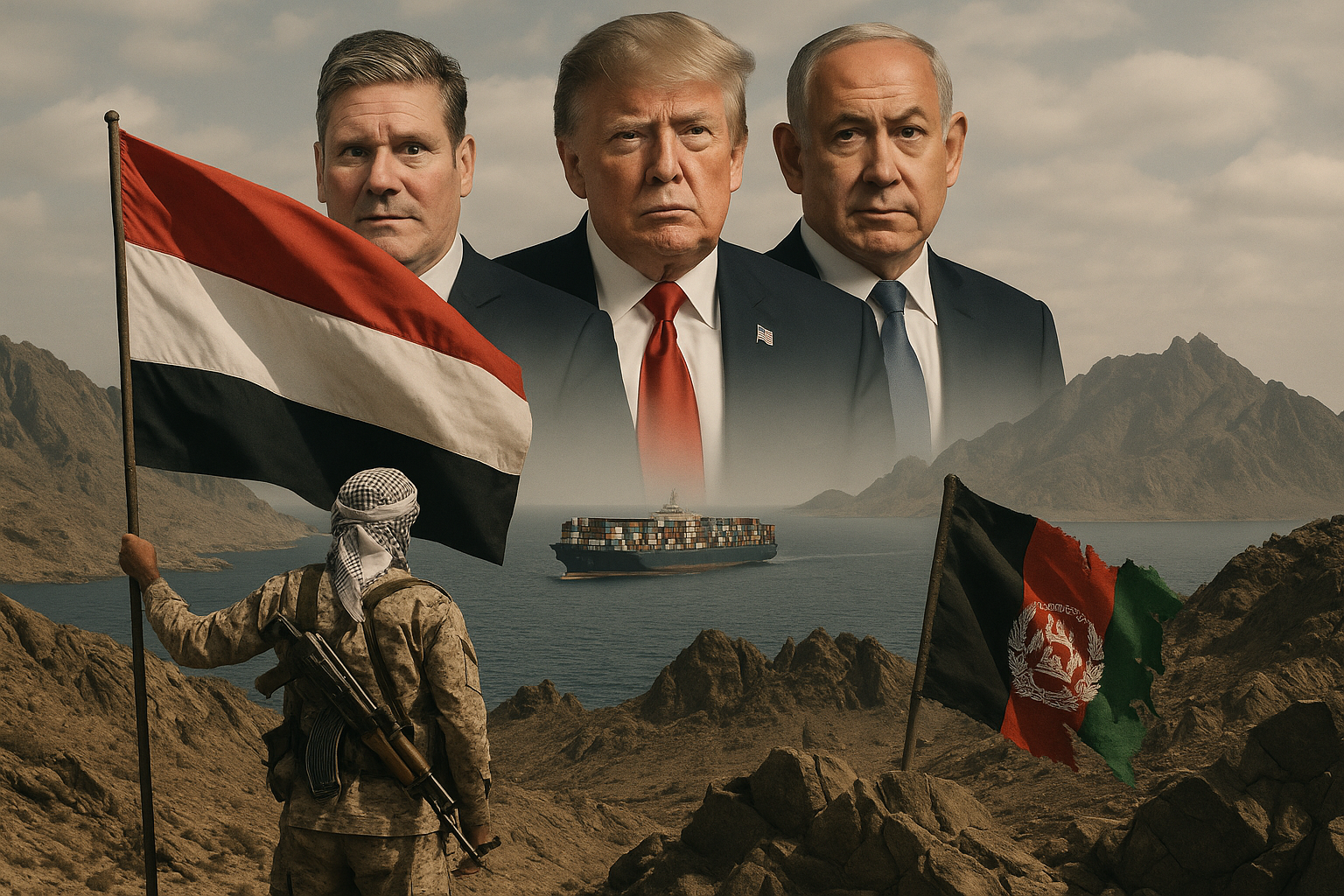The Washington Eye
The drumbeat for a wider war in Yemen is growing louder. For months, the world has watched as the Houthi movement prosecutes a relentless campaign against one of the world’s most vital shipping arteries, launching missiles and drones with impunity. In response, a US- and UK-led coalition, with parallel strikes from Israel, has unleashed hundreds of airstrikes under banners like “Operation Poseidon Archer”. Yet, the attacks persist, vessels continue to sink, and the global economy feels the pinch.
This strategic failure has fueled a dangerous narrative in Washington, London, and Jerusalem: that air power is not enough. The persistent chatter about a ground invasion—involving Special Operations Forces and local proxies—is born of a frustration and a desire for a decisive end to the crisis. But this logic is a siren song, luring the West toward a catastrophic mistake. To put boots on the ground in Yemen would be to willfully ignore the ghosts of the recent past, marching straight into a quagmire with haunting resemblances to Afghanistan. It is a war the West cannot win, and one it must not fight.
The very notion that a foreign-backed ground force could pacify Yemen demonstrates a profound amnesia. Yemen has earned its moniker as the “graveyard of empires” not through myth, but through a brutal, recurring history of repelling outsiders. The country’s geography is its first line of defense. A spine of rugged, almost impassable mountains and arid, unforgiving deserts creates a natural fortress. This is terrain that swallows conventional armies, channeling them into predictable kill zones, while offering near-limitless sanctuary to guerrilla defenders. Roman legions learned this lesson, as did the Ottoman Empire, and more recently, the Saudi-led coalition. They discovered that you can seize a port, but you cannot conquer the hinterland.
Geography has forged a society to match. Isolated by the terrain, Yemen developed the most deeply entrenched tribal system in the Arab world. For centuries, the tribe—not a central state—has been the primary source of law, order, and loyalty. These loyalties are not ideological; they are fluid and pragmatic, shifting to whichever power best serves local interests. Foreign interveners who attempt to build alliances inevitably find themselves entangled in a web of ancient rivalries.
If the landscape and society are a mirror of Afghanistan, the adversary should be even more familiar. The Houthi movement, or Ansar Allah, is a remarkably similar phenomenon to the Taliban, albeit a more technologically advanced iteration. Both are revolutionary Islamist movements that rose to power by exploiting popular grievances against a corrupt, ineffective, and foreign-backed central government. The Houthis, rooted in Yemen’s Zaydi Shia tradition, capitalized on decades of marginalization and anger at the government’s alignment with the U.S. and Saudi Arabia. The Taliban, products of Sunni Deobandism and Pashtun nationalism, emerged from the chaos of civil war promising to end the warlords’ predation and, later, to expel the American “occupiers”.
Both movements mastered the art of out-governing the state. Where the official government was absent or predatory, they provided security and a system of swift, accessible justice. For many ordinary people, support was not an ideological endorsement but a pragmatic choice for the lesser of two evils.
Militarily, their evolutions are parallel. The Taliban perfected a low-tech insurgency, isolating and overwhelming dispersed government checkpoints through a combination of military pressure and sophisticated psychological warfare that shattered their opponents’ will to fight. The Houthis honed their own guerrilla tactics over six brutal wars against the Yemeni state before 2010, becoming masters of ambushes and mountain warfare. They, too, proved adept at manipulating tribal alliances, often using outrage over indiscriminate government and Saudi airstrikes as a powerful recruiting tool.
But here lies the crucial difference that makes the Yemeni challenge even more perilous. The Houthis are, in effect, “Taliban 2.0.” Their strategic patronage from Iran has equipped them with a capability the Afghan Taliban never possessed as insurgents: a formidable arsenal of long-range ballistic missiles, cruise missiles, and advanced drones. This transforms them from a domestic insurgency into a regional power projector. They can wage a Taliban-style ground war while simultaneously striking ships in the Red Sea and cities in Israel. An invading force would face not just a battle-hardened guerrilla army embedded in a sympathetic population and a forbidding landscape, but a quasi-state capable of inflicting strategic pain hundreds of miles away.
An American, British, and Israeli-led ground invasion would be a strategic folly of the highest order. It would begin with the seizure of coastal cities, hailed as an early victory. It would then bog down into a bloody and protracted counter-insurgency in the mountains. The fragile coalition of local Yemeni proxies would inevitably fracture along pre-existing fault lines, just as the last one did.
Most critically, a foreign invasion would be the single greatest propaganda victory the Houthis could imagine. It would validate their entire narrative of defending Yemen from American and Israeli imperialism, transforming a complex civil war into a simple national liberation struggle and swelling their ranks. The war would become a strategic black hole, consuming blood and treasure for no achievable outcome, while handing Iran a low-cost, high-reward victory as its adversaries bleed themselves dry in another unwinnable war.
There is a better, albeit more difficult, path. It begins with acknowledging the reality that the Houthis have explicitly tied their attacks to the war in Gaza, offering a clear diplomatic off-ramp. A durable ceasefire in Gaza is the fastest way to de-escalate the Red Sea crisis. This must be coupled with a sustainable defensive naval posture aimed at managing risk, not chasing the fantasy of total victory. Finally, the international community must abandon the effort to win Yemen’s civil war by proxy and instead reinvigorate a UN-led peace process that addresses the legitimate grievances that fueled the conflict in the first place.
The West stands at a precipice. It can choose a frustrating, indefinite, but manageable containment strategy, or it can choose to leap into a new “forever war.” The lessons from Afghanistan are written in blood and treasure. To ignore them in Yemen would not just be a mistake; it would be an unforgivable strategic failure.
















